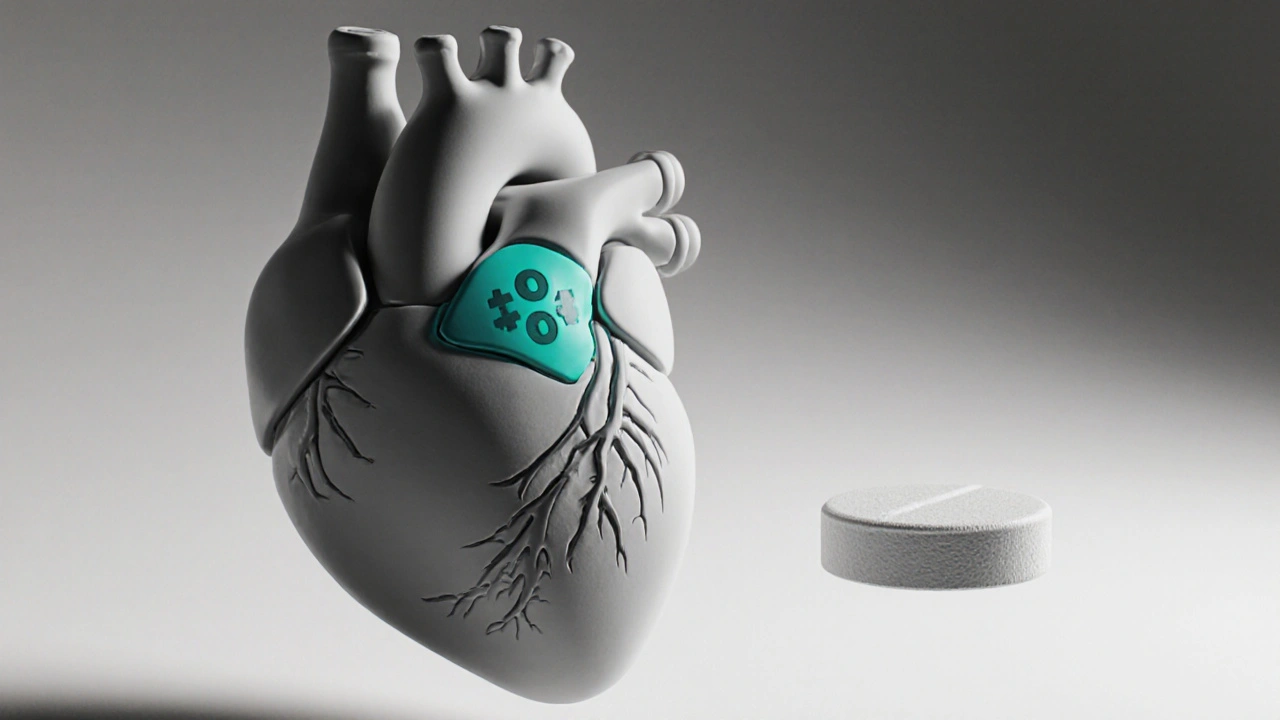Learn how bisoprolol fumarate improves outcomes for congestive heart failure patients, its dosing, side effects, and how it stacks up against other beta‑blockers.
Read MoreBisoprolol fumarate – Overview & Practical Insights
When you look at Bisoprolol fumarate, a selective beta‑1 adrenergic blocker used to lower blood pressure and protect the heart. Also known as bisoprolol, it belongs to the broader beta blocker, a class of drugs that slow heart rate and reduce cardiac workload family. Doctors often prescribe it for people battling hypertension, persistently high arterial pressure that strains the heart and vessels or for those coping with heart failure, a condition where the heart cannot pump enough blood to meet the body’s needs. It’s also a go‑to option in managing atrial fibrillation, an irregular heart rhythm that can lead to stroke or heart failure. In short, Bisoprolol fumarate is a versatile medication that fits into multiple cardiovascular treatment plans, making it a cornerstone for many clinicians.
How Bisoprolol Works and What to Expect
Bisoprolol works by blocking beta‑1 receptors in the heart, which reduces the force and speed of each heartbeat. This action lowers cardiac output and, in turn, drops blood pressure. Because it targets beta‑1 receptors specifically, it spares the lungs more than non‑selective beta blockers, so patients with mild asthma often tolerate it better. Typical starting doses range from 2.5 mg to 5 mg once daily, with adjustments up to 20 mg depending on response and kidney function. Taking the pill at the same time each day—usually in the morning—helps keep blood levels stable.
Common side effects include tiredness, dizziness, or a mild cold‑like feeling in the hands and feet. These usually fade after a week as the body adapts. More serious issues, such as bradycardia (heart rate below 50 bpm) or worsening heart failure symptoms, should prompt an immediate call to a doctor. Interactions are worth watching: combining bisoprolol with other heart‑lowering drugs (like calcium channel blockers or digoxin) can amplify its effects, while certain antidepressants (e.g., fluoxetine) may raise its blood concentration. Alcohol can also enhance dizziness, so moderation is advised.
Monitoring is straightforward. A baseline ECG and blood pressure reading help set the target. Follow‑up visits every 2–4 weeks during dose titration let clinicians tweak the regimen safely. Labs to check kidney function and electrolytes are useful, especially for patients with chronic kidney disease. Patients should keep a simple log of heart rate, any symptoms of fatigue, and any missed doses; sharing this with the prescriber speeds up adjustments.
Beyond the core uses, bisoprolol shows up in newer research focusing on preventing arrhythmias after heart surgery and reducing hospital readmissions for chronic heart failure. Some studies suggest that adding bisoprolol to standard therapy can improve exercise capacity and quality of life, especially for older adults. If you’re curious about the latest evidence, ask your healthcare provider about recent guidelines from cardiology societies—they often reference these findings when updating treatment plans.
Whether you’re starting bisoprolol for the first time or have been on it for years, understanding how it fits into the broader picture of cardiovascular care helps you stay proactive. Below you’ll find a curated collection of articles that dive deeper into dosing strategies, side‑effect management, drug interactions, and real‑world patient stories—all aimed at giving you the confidence to use bisoprolol safely and effectively.
